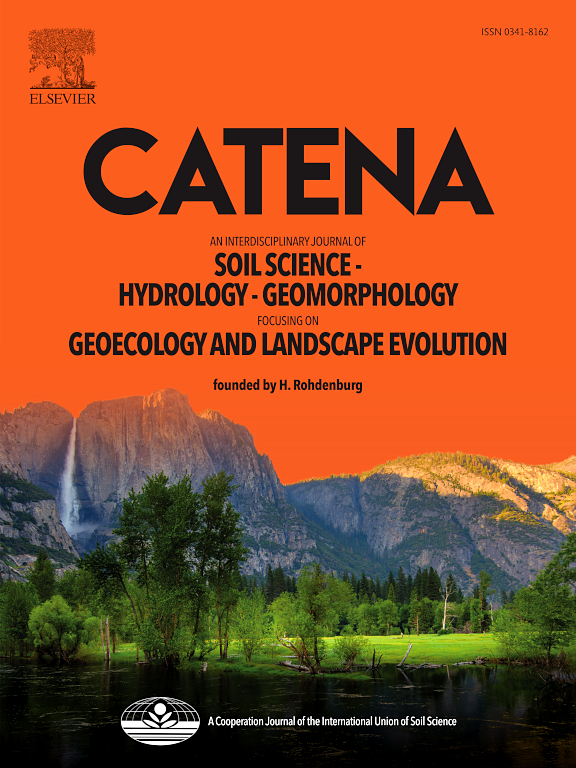Construction of ecological security patterns in typical arid regions based on the synergy of efficient ecological water utilization and environmental quality enhancement
IF 5.4
1区 农林科学
Q1 GEOSCIENCES, MULTIDISCIPLINARY
引用次数: 0
Abstract
The ecological security pattern (ESP) represents a crucial spatial strategy for ensuring ecological security and promoting sustainable development in arid regions. However, there remains a significant lack of in-depth research on how to construct such a pattern under the dual objectives of efficient ecological water utilization (EWU) and enhancement of ecological environment quality (EEQ). This study evaluates the benefits of ecological water conveyance (EWC) in the lower reaches of the Tarim River, utilizing the modified remote sensing ecological index (MRSEI) model and Maxent model to identify ecological sources. Ecological corridors were further delineated using circuit theory to construct a comprehensive ESP. The findings indicate that increased EWC elevates groundwater levels in the riparian zone to saturation point, subsequently boosting water inflow into Taitema Lake. As water conditions improve, vegetation coverage tends to stabilize, with no significant further increase observed. To further enhance the efficiency of EWU and strengthen the EEQ, the study identifies ecological patches and potential P. euphratica distribution areas requiring urgent protection and restoration under current and potential conditions. By integrating the corridors linking these ecological sources with the river system, the EWU paths are optimized. Additionally, to improve corridor connectivity and facilitate ecological restoration, ecological pinch points and barrier points were identified, and protection zones of varying levels were delineated based on proximity to the corridors. The ESP developed in this research provides a valuable reference for achieving efficient EWU and fostering sustainable environmental development in arid regions.
求助全文
约1分钟内获得全文
求助全文
来源期刊

Catena
环境科学-地球科学综合
CiteScore
10.50
自引率
9.70%
发文量
816
审稿时长
54 days
期刊介绍:
Catena publishes papers describing original field and laboratory investigations and reviews on geoecology and landscape evolution with emphasis on interdisciplinary aspects of soil science, hydrology and geomorphology. It aims to disseminate new knowledge and foster better understanding of the physical environment, of evolutionary sequences that have resulted in past and current landscapes, and of the natural processes that are likely to determine the fate of our terrestrial environment.
Papers within any one of the above topics are welcome provided they are of sufficiently wide interest and relevance.
 求助内容:
求助内容: 应助结果提醒方式:
应助结果提醒方式:


